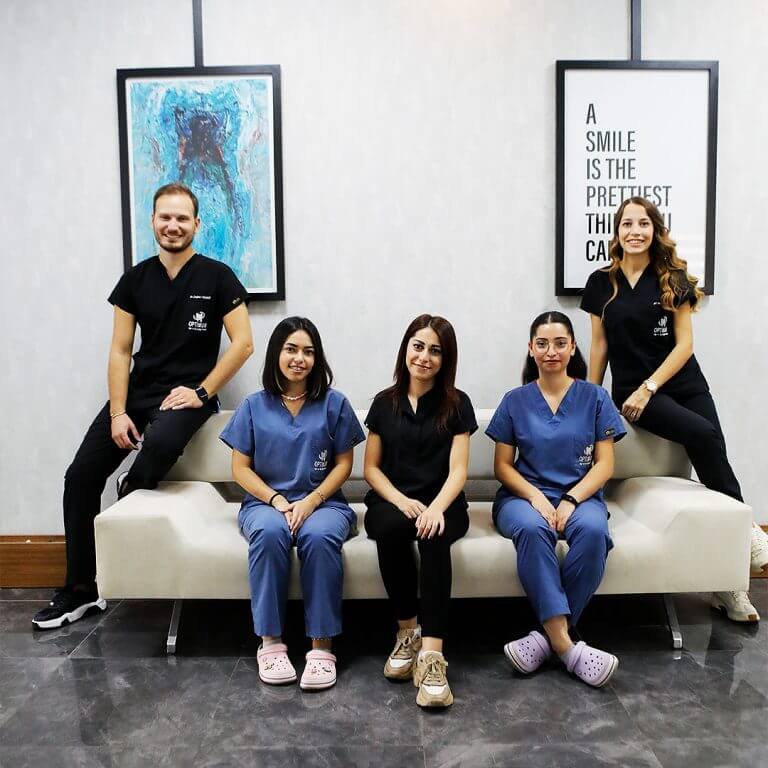Endodontics
Have a question? Just send our admin team a message and we’ll get back to you as quickly as possible.
What are Endodontics?
Endodontics treats tooth pulp. In the mirror, you see your tooth’s crown. The tooth’s root is buried below the gum line. The outside root is hard dentin, whereas the inner “root canal” includes soft tissue, blood arteries, and nerves. Tooth decay, periodontal disease, trauma, tooth fracture, and other disorders can transfer germs and bacterial products into the pulp, damaging it. Endodontists remove damaged pulp to preserve teeth and avoid infection and inflammation.
What is endodontic treatment?
Inflamed or infected pulp requires endodontic therapy. Deep cavities, recurrent dental operations, and cracks or chips cause irritation or infection. Inflammation from trauma can cause tooth discolouration. Untreated pulp irritation or infection can cause discomfort and abscesses. Even if the pulp isn’t inflamed or diseased, your dentist may offer endodontic therapy for restorative objectives.
How Can Endodontic Treatment help me?
Endodontics saves inflamed or diseased teeth. After endodontic treatment and restoration by your regular dentist, a tooth should not pain and function normally. Endodontic therapy has a 90% to 95% success rate and is less costly and intrusive than a bridge or implant.
Endodontic Treatment: What to Expect?
Endodontists remove inflammatory or diseased pulp, clean and shape the root canal system, and seal the prepared area. Most treatments take 60-90 minutes (depending on the complexity of the case). Inflamed or infected teeth may require further visits. After treatment, you’ll need a permanent crown or filling. This permanent tooth repair plugs the cleansed canals, preserves and restores the tooth’s function.
Will the surgery hurt?
Many people may feel discomfort before Endodontic Treatment due to tooth pain. Modern anesthetics make most procedures painless. After the treatment, there may be sensitivity to biting and gum and jaw soreness, especially if there was pain or infection beforehand. Our physicians recommend ibuprofen to reduce post-operative sensitivity. Sometimes stronger pain drugs and/or antibiotics are administered.
Case Studies

The part of the tooth that is visible in the mouth is called the crown, and the part that is not visible in the mouth is called the root. Our teeth are made up of several layers. The outermost part of the crown, that is, the part that is seen in our mouth is called enamel. The cement layer covers the root part of our tooth, which is under the gum and surrounded by bone. There is also the dentin layer under the tooth enamel and cement layers. Dentin is the largest layer of the tooth, and, unlike the enamel layer, it contains nerve endings. With this feature, it plays a role in the pain mechanism.
Under the dentin layer is the dental pulp. In this part, there are vessels and nerves of the tooth. The pulp plays an important role during the eruption and development of the tooth. It also informs us about the pain mechanism and the problems our teeth encounter after the tooth erupted.
Endodontics
Endodontics is the main branch of science in which root canal treatments are performed. Today, root canal treatment is performed in a single session in live teeth and in two sessions in teeth that have lost their vitality.
Ask us anything
We’re here to help
Have a question? Just send our admin team a message and we’ll get back to you as quickly as possible.
How is the pulp inflamed?
Every person has bacteria in their oral cavity. Bacteria combine with many of the foods we eat and cause acids to form in our mouths. If we cannot remove these formed acids from our mouth, these substances damage the enamel and cause decays in the enamel layer. If the bruises in the enamel are not treated, they pass into the dentin layer which is under the enamel layer. Although the dentin layer warns us through pain, if the decaying area is not treated again, this time the microorganisms move towards the pulp. In the meantime, the pulp engages various ways to protect itself. One of these ways is to warn us through pain.
Another way in which inflammation can occur in the pulp is trauma. An impact to the tooth may cause rupture of the vessels and nerves from the root of the tooth to the root tip, thus causing the tooth to lose its vitality. In this case, the addition of microorganisms by any means causes inflammation of the pulp. Another way the pulp can become infected is the presence of a long-term periodontal (gum area and its surroundings) disease around the tooth.
How to tell if a tooth is infected?
Toothache and tooth sensitivity that occurs during cold and hot food consumption may be a sign of inflammation. Excessive discoloration of the teeth can also be included in these signs of inflammation. Apart from these, in untreated teeth where the decay reaches the pulp, the infection goes from the root tip to the jawbone and may cause small or large swellings on the face. In this case, the use of antibiotics can be applied in addition to the fight against infection with the procedures performed by the dentist. The common belief is that the tooth that causes swelling on the face should be removed after the swelling goes down, but this is a very outdated belief. At this point, even the tooth that causes infections can be saved by performing a root canal treatment and can serve you for years like a healthy tooth.
What Are the Stages of Root Canal Treatment?
1. Identification of the problematic tooth by taking an x-ray.
2. If the tooth is alive, local anesthesia is used to prevent the sensitivity of the tooth and surrounding tissues.
3. Cleaning the decays in the enamel and dentin layers of the tooth and creating the access way to reach the pulp.
4. Determining the working length by using electronic instruments and confirming it with an x-ray.
5. Destruction and removal of infected dentin layers and microorganisms in the root canal using by rotary instrument systems.
6. Destroying microorganisms with various root canal disinfectants while using rotary instrument systems in root canals.
7. If the tooth is not alive when starting the root canal treatment, waiting for a certain time with a root canal antiseptic to be placed in the root canal and filling the root blood at the next meeting.
After the root canal treatment, it is aimed to cut the connection of the tooth with the surrounding tissues, so that the infection does not occur again and if there is any damage to the surrounding tissues of the tooth, it is aimed to be repaired.
Top Reviews
More than 100 five-star reviews on Google
I would like to share my views after about 3 months of treatment. First, I researched many countries and spoke to many clinics.
The clinic we went to for my fiancée's wisdom tooth extraction was so hygienic and sterilized, similar to the Covid days. The staff welcomed us with smiling faces, and the attention of the employees & the workmanship of the doctors were all perfect. I really recommend this dental clinic for anyone who wants dental care.
We started our dental treatment with Mr. Çağkan last week and it was completed today. This man is simply professional and friendly ! I would recommend a very successful dentist like him, along with his friendliness and sincerity to everyone.
I went there for a Wisdom tooth extraction and a root canal treatment. I would like to thank all Optimum Oral and Dental Health Center employees, especially Dr. Çağkan and Ms. Seren, for their high interest in my case and concern about my dental health. It is a super hygienic dental care center. Wishing them the best of luck !

About Us
Are you looking for a dentist to give you that special smile?
- Hygienic
- Friendly service
- Free inspection
- 7/24 accessibility
- Qualified Staffs
- Specialist Staffs


